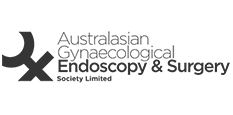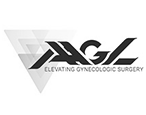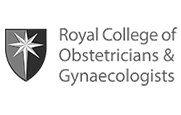Urinary Incontinence Surgery
When to consider surgery for stress urinary incontinence?
Surgical treatment for stress urinary incontinence can be considered when symptoms are troublesome enough and unresponsive to conservative treatment. Surgery is usually delayed until family planning is complete as pregnancies post-surgery can potentially decrease the effectiveness of continence surgery. Surgery is not indicated for urge urinary incontinence though urgency may improve following stress incontinence surgery.
What are the surgical treatment options for stress urinary incontinence?
Surgical treatment options include:
Mid-urethral sling / tape:
- Mid-urethral sling was first introduced in 1995 and consists of placing a narrow strip of synthetic mesh under the mid section of urethra to restore support and continence.
- There are two types of mid-urethral sling, retropubic sling (TVT) and trans-obturator sling (TOT), with the difference being where it is positioned in the pelvis. A retropubic sling is positioned behind the pubic bone and in front of the bladder, whereas a trans-obturator type is further on the side, away from the bladder and towards the groin.
- The procedure is performed through a minimally invasive approach without needing a traditional large abdominal incision. It involves a small 1.5cm incision under the urethra and two 1cm incisions either on the abdomen above the pubic bone (TVT) or around the skin fold creases in the groin (TOT).
- The reported long-term success rate is 80-90% and it is currently the most commonly performed continence procedure
- Usually requires only one night of hospital stay
Laparoscopic Burch Colposuspension (No mesh involved):
- Burch Colposuspension was first reported in 1961 and aims to restore bladder neck support using 4 permanent sutures. This is achieved by suturing the underlying vagina on either side of the bladder neck and suspending it to the ligaments on the top of pubic bone.
- This procedure was previously performed as an open procedure through a large abdominal incision but nowadays, it is performed laparoscopically. It was the “gold standard” treatment for stress urinary incontinence prior to the advent of mid-urethral sling procedure. Success rate is reported to be around 80-85%.
- It is a technically more difficult operation than a mid-urethral sling as it is a laparoscopic procedure (keyhole surgery), involving 4 small incisions in the abdomen
- Hospital stay is usually 1-2 nights
Urethral bulking agents:
- A synthetic substance is injected under the urethral lining, close to the bladder neck. It “bulks” up the tissue around the bladder neck, which is the junction between the bladder and the urethra, narrowing the urethral opening to minimise urinary leakage
- The success rate is reported to be around 70% which is lower than the previously mentioned procedures, however it avoids the more involved surgery
- This treatment needs to be repeated as the effect decreases over time.
- Bulking agents are recommended for women who are in poor health and unfit for surgery, and those who have previously undergone unsuccessful continence surgery
What are the risks of surgical treatment for stress urinary incontinence?
In addition to the general risks associated with any surgical procedure such as reaction to anaesthesia, infection, bleeding, injury to surrounding neighboring structures and blood clots forming in the leg that may travel to the lungs, specific risks pertaining to surgical treatment for incontinence include:
- Surgery not being successful 10-15%
- Urinary tract infection following surgery 5%
- Urinary frequency and urgency that is often temporary but may be permanent 2-5%
- Voiding difficulty that is often temporary but may be permanent in 2-5%. This is usually in women with a pre-existing weakness in the bladder wall muscle and therefore unable to generate contractions strong enough to fully empty the bladder. Short term self catheterisation may be required
- Altered bladder sensation with reduced sensation of bladder filling 2%
- Further surgery to release the sling or sutures to ease the tension around the urethra 1-2%
- Mesh erosion requiring trimming of the mesh 1%
- Chronic pain possibly related to mesh reactions that may require removal of mesh 1%
- Injury to bladder <1%
What to expect during recovery following stress incontinence surgery?
The recovery process varies depending on which procedure was performed. Following a mid-urethral sling procedure, the recovery time is quite brief as the sling is “gripped” by the surrounding tissue as they move into the numerous pores of the mesh between the weaves. However, following a laparoscopic Burch Colposuspension, the area around where the urethra is re-suspended with sutures require time for healing and scar formation to give it strength. The maximum tissue strength is achieved after 3 months of healing. Therefore heavy lifting and straining should be avoided for 6 weeks to 3 months. Following all incontinence and prolapse repair surgeries, general recovery principles include modification of lifestyle, avoiding unnecessary straining and practicing regular pelvic floor exercise.
Helpful Links
Patient information from the International Urogynecological Association
Colposuspension for Stress Incontinence















